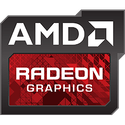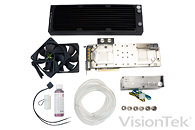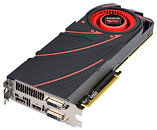
AMD Didn't Get the R9 Fury X Wrong, but NVIDIA Got its GTX 980 Ti Right
This has been a roller-coaster month for high-end PC graphics. The timing of NVIDIA's GeForce GTX 980 Ti launch had us giving finishing touches to its review with our bags to Taipei still not packed. When it launched, the GTX 980 Ti set AMD a performance target and a price target. Then began a 3-week wait for AMD to launch its Radeon R9 Fury X graphics card. The dance is done, the dust has settled, and we know who has won - nobody. AMD didn't get the R9 Fury X wrong, but NVIDIA got its GTX 980 Ti right. At best, this stalemate yielded a 4K-capable single-GPU graphics option from each brand at $650. You already had those in the form of the $650-ish Radeon R9 295X2, or a pair GTX 970 cards. Those with no plans of a 4K display already had great options in the form of the GTX 970, and price-cut R9 290X.
The Radeon R9 290 series launch from Fall-2013 stirred up the high-end graphics market in a big way. The $399 R9 290 made NVIDIA look comically evil for asking $999 for the card it beat, the GTX TITAN; while the R9 290X remained the fastest single-GPU option, at $550, till NVIDIA launched the $699 GTX 780 Ti, to get people back to paying through their noses for the extra performance. Then there were two UFO sightings in the form of the GTX TITAN Black, and the GTX TITAN-Z, which made no tangible contributions to consumer choice. Sure, they gave you full double-precision floating point (DPFP) performance, but DPFP is of no use to gamers. So what could have been the calculation at AMD and NVIDIA as June 2015 approached? Here's a theory.Image credit: Mahspoonis2big, Reddit
The Radeon R9 290 series launch from Fall-2013 stirred up the high-end graphics market in a big way. The $399 R9 290 made NVIDIA look comically evil for asking $999 for the card it beat, the GTX TITAN; while the R9 290X remained the fastest single-GPU option, at $550, till NVIDIA launched the $699 GTX 780 Ti, to get people back to paying through their noses for the extra performance. Then there were two UFO sightings in the form of the GTX TITAN Black, and the GTX TITAN-Z, which made no tangible contributions to consumer choice. Sure, they gave you full double-precision floating point (DPFP) performance, but DPFP is of no use to gamers. So what could have been the calculation at AMD and NVIDIA as June 2015 approached? Here's a theory.Image credit: Mahspoonis2big, Reddit




